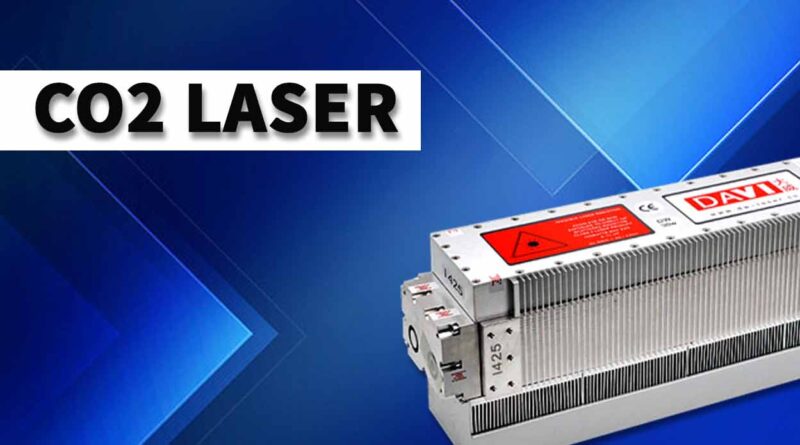The Versatility of CO2 Laser Technology: Applications and Advantages
CO2 laser technology is renowned for its versatility and effectiveness across various fields, from industrial manufacturing to medical treatments. This type of laser, known for its ability to produce a high-powered, focused beam of light, has transformed numerous processes and applications. In this article, we will explore the principles behind CO2 lasers, their wide range of applications, and the benefits they offer.
Understanding CO2 Laser Technology
CO2 laser technology utilizes a carbon dioxide gas mixture as its laser medium. The CO2 laser emits a wavelength of approximately 10.6 micrometers, which falls within the infrared spectrum. This wavelength is highly effective at interacting with a range of materials, particularly organic substances such as wood, paper, and plastics. The CO2 laser produces a continuous or pulsed beam of light that can be finely tuned for various applications.
The operation of a CO2 laser involves exciting the carbon dioxide molecules within the laser tube. When these molecules return to their normal state, they release energy in the form of a laser beam. This beam is then directed through a series of mirrors and lenses to focus it onto a specific target. The focused beam can be used for cutting, engraving, or marking materials with high precision.
Applications of CO2 Lasers
Industrial Cutting and Engraving
One of the primary applications of CO2 laser technology is in industrial cutting and engraving. CO2 lasers are widely used for cutting through materials such as acrylic, wood, leather, and textiles. Their ability to produce clean, precise cuts with minimal kerf (the width of the cut) makes them ideal for manufacturing processes where accuracy is crucial.
In addition to cutting, CO2 lasers are used for engraving and marking various materials. The high power and precision of CO2 lasers allow for detailed and intricate designs to be etched onto surfaces. This capability is valuable in industries such as advertising, where custom signage and promotional items require high-quality engraving.
Medical Treatments
CO2 laser technology has also made significant contributions to the medical field. The precision and controlled energy of CO2 lasers make them suitable for a variety of medical procedures. In dermatology, CO2 lasers are used for skin resurfacing, removal of benign lesions, and treatment of scars. The laser’s ability to target specific layers of skin allows for effective treatment with minimal damage to surrounding tissues.
Furthermore, CO2 lasers are employed in surgical procedures, particularly in soft tissue surgeries. The laser’s precision helps in minimizing bleeding and reducing the risk of infection. This characteristic is especially beneficial in delicate surgeries, where traditional methods might pose higher risks.
Scientific Research
In scientific research, CO2 laser technology is used in experiments and applications requiring precise and powerful light sources. The CO2 laser’s ability to generate high-intensity beams makes it suitable for studying the properties of materials, conducting spectroscopy, and performing various types of measurements. Researchers utilize CO2 lasers for their stability and reliability in delivering consistent and focused light.
Advantages of CO2 Laser Technology
Precision and Accuracy
One of the key advantages of CO2 laser technology is its precision. The ability to focus a high-powered beam of light onto a small area allows for accurate cutting, engraving, and marking. This precision is essential in both industrial and medical applications, where detailed work and exact results are required.
Versatility
CO2 lasers are highly versatile and can be adapted for a wide range of applications. Their ability to work with various materials, including metals, plastics, and organic substances, makes them valuable in diverse fields. Whether for manufacturing, medical treatments, or scientific research, CO2 lasers offer flexibility and adaptability.
Minimal Heat-Affected Zone
The CO2 laser’s focused beam minimizes the heat-affected zone (HAZ) around the area being processed. This characteristic is particularly important in applications such as cutting and engraving, where excessive heat can alter the material properties or cause unwanted effects. By reducing the HAZ, CO2 lasers ensure high-quality results with minimal thermal impact.
Challenges and Future Developments
Despite their numerous advantages, CO2 lasers face some challenges. The technology requires precise calibration and maintenance, which can be complex and costly. Additionally, CO2 lasers are less effective on certain reflective materials, such as metals, which may require different types of lasers or additional processing steps.
Looking ahead, advancements in CO2 laser technology are expected to address these challenges. Innovations may include improvements in laser efficiency, enhanced capabilities for working with reflective materials, and more cost-effective solutions. As technology evolves, CO2 lasers will continue to play a significant role in various applications, driving progress and innovation.
Conclusion
CO2 laser technology offers a range of benefits, including precision, versatility, and minimal heat-affected zones. Its applications span industrial manufacturing, medical treatments, and scientific research, showcasing its broad utility and effectiveness. As advancements continue, CO2 lasers will remain a critical tool in achieving high-quality results and driving innovation across multiple fields.



